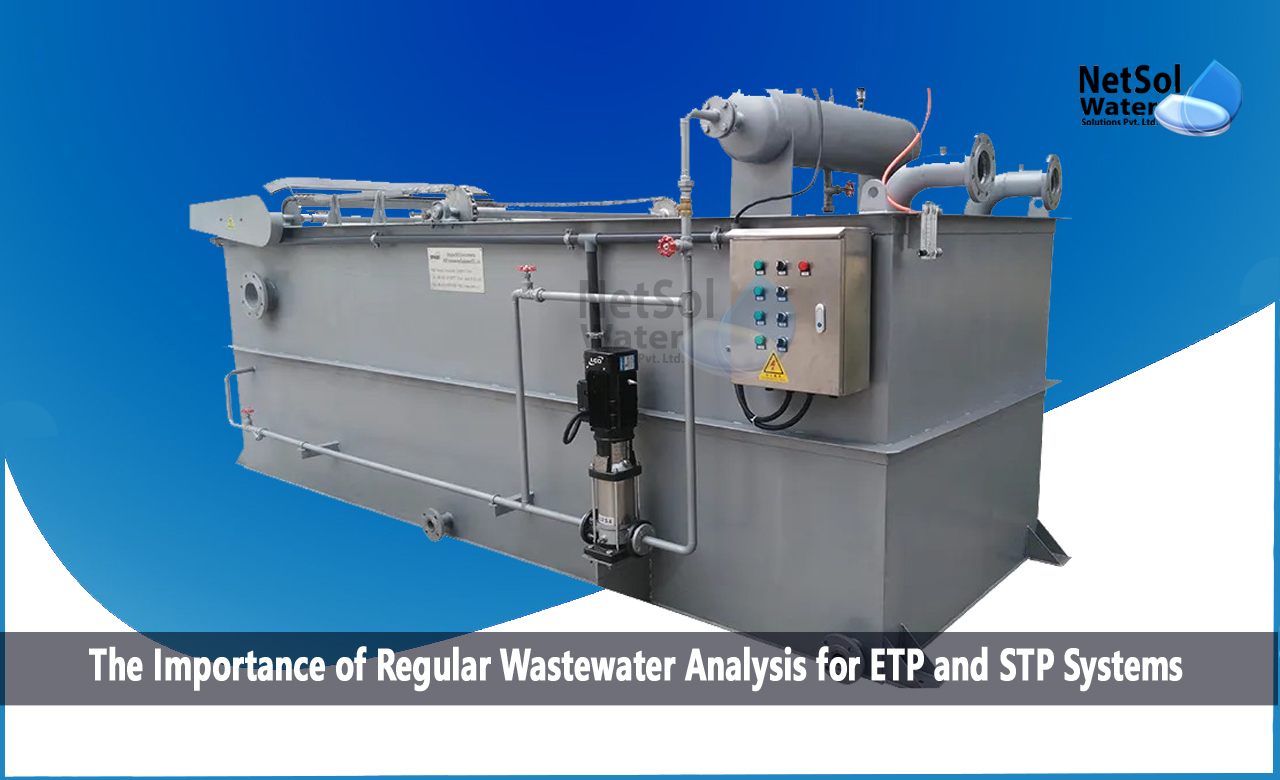The importance of regular wastewater analysis for ETP and STP systems
Wastewater treatment plants play a crucial role in ensuring the protection of public health and the environment. These plants are designed to remove pollutants and contaminants from wastewater before it is discharged into the environment. However, in order to ensure that these treatment plants are operating at peak efficiency, regular wastewater analysis is necessary.
In this blog, we will discuss the importance of regular wastewater analysis for ETP and STP systems in detail.
Identifying Potential Issues
Regular wastewater analysis can help to identify potential issues with the treatment process. For example, if the wastewater contains a high level of a certain pollutant, it may indicate that the treatment process is not effectively removing that pollutant. By identifying these issues early on, operators can take corrective actions to address them before they become more serious problems.
To ensure the proper functioning of ETP and STP systems, it's important to identify potential issues with the system. These could include mechanical or operational issues or improper treatment processes. By conducting regular wastewater analysis, operators can detect changes in the wastewater composition, which can indicate issues with the system. For example, high levels of suspended solids in the wastewater may indicate a problem with the filtration system. Similarly, high levels of nitrogen and phosphorus can indicate issues with biological treatment processes, while high levels of oil and grease could indicate a problem with the grease trap or separator.
Compliance with Environmental Regulations
Regular wastewater analysis is also necessary to ensure that the treatment plant is operating in compliance with environmental regulations. Environmental agencies set limits on the amount of certain pollutants that can be discharged into the environment. Regular analysis helps to ensure that the treatment plant is not exceeding these limits, which can result in fines and other penalties.
For example, the Environmental Protection Agency (EPA) sets national standards for effluent limitations for various pollutants, such as BOD, TSS, nitrogen, and phosphorus. These standards are designed to protect public health and the environment. Regular wastewater analysis helps operators to ensure that the treatment plant is meeting these standards and not violating any environmental regulations.
Optimizing Treatment Processes
Regular wastewater analysis can also help to optimize treatment processes. By analyzing the wastewater, operators can determine the most effective treatment methods for removing specific pollutants. This can result in more efficient and cost-effective treatment processes.
For example, by conducting regular analysis, operators can determine the optimal chemical dosage for coagulation and flocculation processes, the optimum retention time for biological processes, and the optimal pH range for chemical treatment processes. These optimizations can result in improved treatment efficiencies and cost savings for the treatment plant.
Improving Water Quality
Regular wastewater analysis is crucial for improving water quality. The pollutants and contaminants found in wastewater can have a negative impact on aquatic ecosystems, wildlife, and even human health. By ensuring that treatment plants are effectively removing these pollutants, we can improve the quality of our water resources and protect our environment.
In addition, wastewater effluent is often discharged into nearby water bodies, such as rivers, lakes, or oceans. These water bodies are used for a variety of purposes, such as recreation, drinking water supply, and irrigation. By improving the quality of wastewater effluent, we can protect these water bodies and ensure their sustainable use for generations to come.
Ensuring Public Health and Safety
Wastewater contains a variety of microorganisms, including bacteria and viruses, that can be harmful to human health. Regular analysis helps to ensure that these microorganisms are being effectively removed from the wastewater before it is discharged into the environment. This helps to protect public health and safety.
For example, regular analysis can help to identify the presence of pathogenic microorganisms, such as E. coli, Salmonella, or Cryptosporidium, in the wastewater. If these microorganisms are not effectively removed from the wastewater, they can pose a significant health risk to those who come into contact with the contaminated water.
Conclusion
In conclusion, regular wastewater analysis is essential for ensuring that ETP and STP systems are operating at peak efficiency and in compliance with environmental regulations. It helps to identify potential issues with the treatment process, optimize treatment processes, improve water quality, and protect public health and safety. By investing in regular wastewater analysis, we can ensure that our wastewater treatment plants are effectively removing pollutants and contaminants from wastewater, and protecting our environment for future generations.
Wastewater analysis should be conducted by trained professionals using appropriate sampling and testing methods. The frequency of analysis should be determined based on the specific requirements of the treatment plant and environmental regulations. In addition, the results of wastewater analysis should be properly documented and reviewed by the treatment plant operator to ensure that any issues are promptly addressed.
By recognizing the importance of regular wastewater analysis, we can ensure that our wastewater treatment plants are operating effectively and efficiently, and that we are protecting our environment and public health for years to come.
For any other support, inquiries, or product purchases, call on +91-9650608473 or email at enquiry@netsolwater.com



